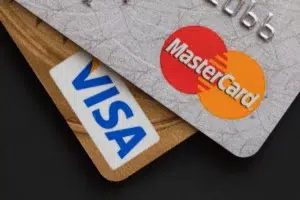7 Steps To Kick-Starting An Improved You (Or Business)
Perhaps more than in any other time in history, in 2016, your name is your brand, says Pamela J. Green, a business and branding expert.
“I think most of us get this concept – we live in a celebrity-obsessed society, so we understand how a person’s name can also be their brand,” she says. “Social media also reinforces this idea. Our names are usually one of an infinite chorus of brands. People can see who liked a New York Times article, who criticized a political position and who recently became engaged to whom. Most people today meet our name/brand before actually – or ever – meeting us in person.”
While many may see this as cold and impersonal, Green says this could be an opportunity to more objectively improve who we are – whether on a personal or business basis.
Green, author of the new book “Think Like a Brand,” (www.pamelajgreen.com), offers a summary of her seven steps to improving your brand.
• Begin by writing your mission. What drives you? To know this is to help you determine what success means in your life. Football hall of famer Michael Strahan, for example, knew that he didn’t want to disappoint his parents. Whatever drives you, Green says, a clear mission achieving it will act as a discernable path on a reliable map.
• Identify your organization’s brand, needs and priorities. This is for those who want to better bond their own name/brand to another brand/organization. What’s the connection? If your company’s brand is about making healthy tasty treats, and you are developing a personal brand centered on music and art therapy, there could be a mission disconnect. Or, you simply haven’t found the sensible way to make the underlying connection.
• Conduct your brand research. Determine the future skills needed for what you want to do, and research the industry and businesses in the industry that have success in your ideal future. For the more personal branding perspective, ask yourself, “What are the long-term habits I need to adopt in order to be the person I want to be five years from now?” That could be learning a new language or adopting a new diet.
• Create your brand template. If your brand were a can on a shelf, would it be dented, disheveled and would the label be torn? If you ignore, reject or skip this step, Green says, then you’ve volunteered to live the life you have instead of the life you want.
• Grow strategic visibility. In a room or a business meeting, would you describe yourself as a church mouse or a brave eagle? Even if your brand emphasizes a sort of low-key class and subtlety that already features an enviable client who’s who list, you don’t want your image to be diminished.
• Identify your brand adjacencies. While building your brand today, do not dismiss what it could be a decade down the line. You likely have unidentified talents. Or, your brand/business may be utilized in a way you haven’t yet considered.
• Scale your brand. EVERY brand needs to remain relevant to remain sustainable. To be sustainable, your brand needs to be scalable. Your ability to deliver consistent performance at a high level is what leads to brand sustainability. Assess who will help you be accountable for the achievement of your goals and the continued sustainability of your brand. On a personal level, that person may be a personal trainer; businesswise, it could be a promising employee.
*Pamela J. Green (www.pamelajgreen.com) is a business executive, leadership consultant, keynote speaker and published author with more than 25 years of business leadership experience










